
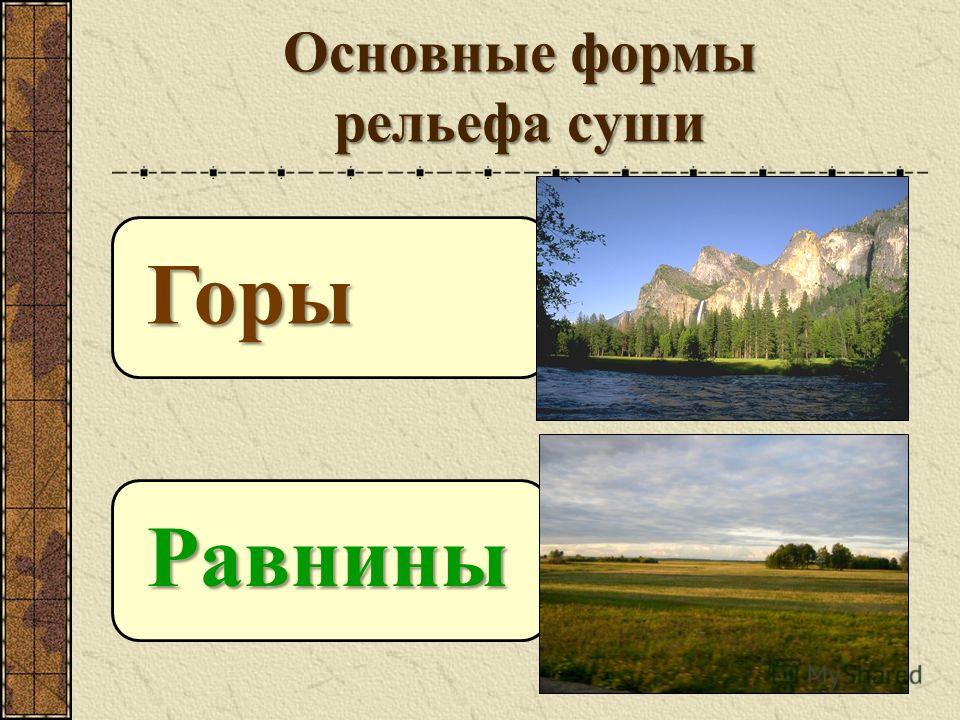
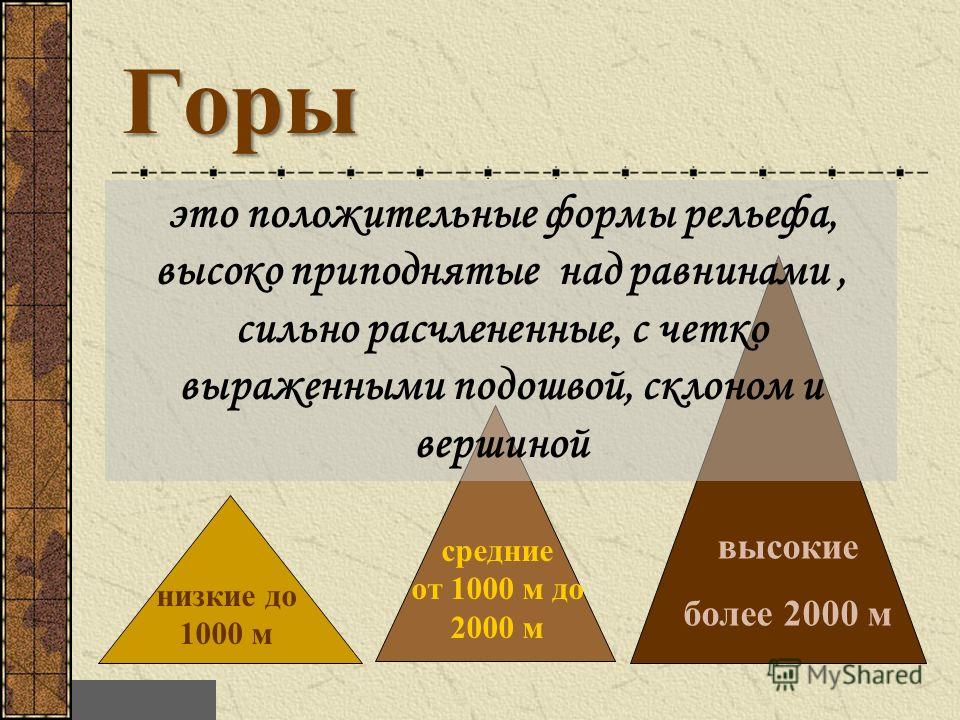
The most unique mountains in the world The highest - Mount Chomolungma (Everest), m The longest mountains - Andes (South America), more than km
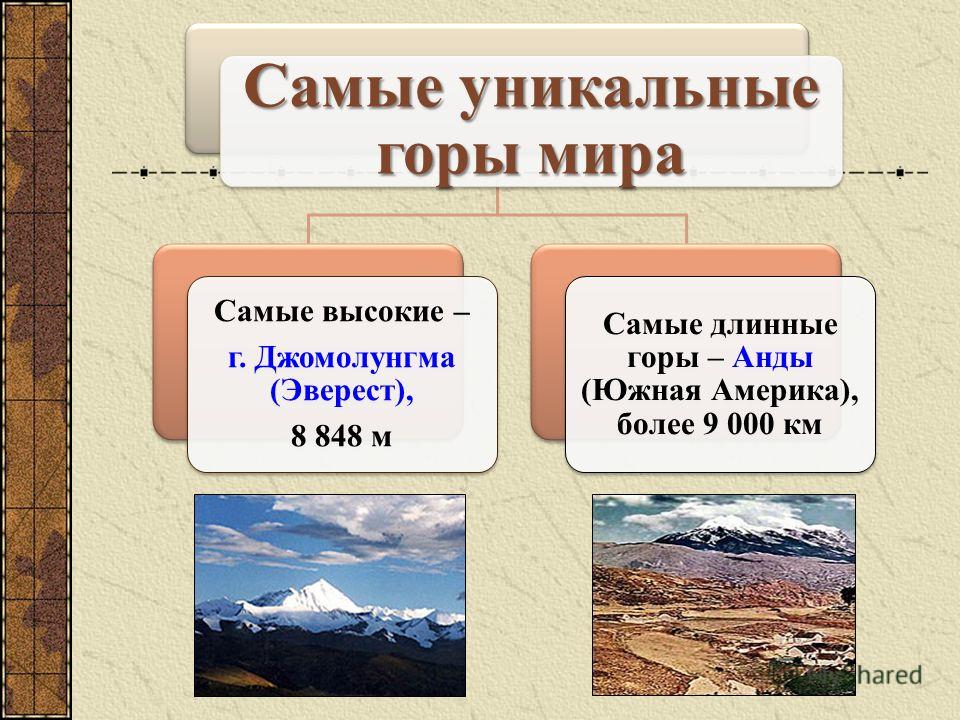
Ocean level Depression 2. Lowland (up to 200 m) 3. Elevation (from 200 to 500 m) 4. Plateaus or plateaus (more than 500 m) Plains are leveled areas of the earth's surface with small (up to 200 m) elevation changes

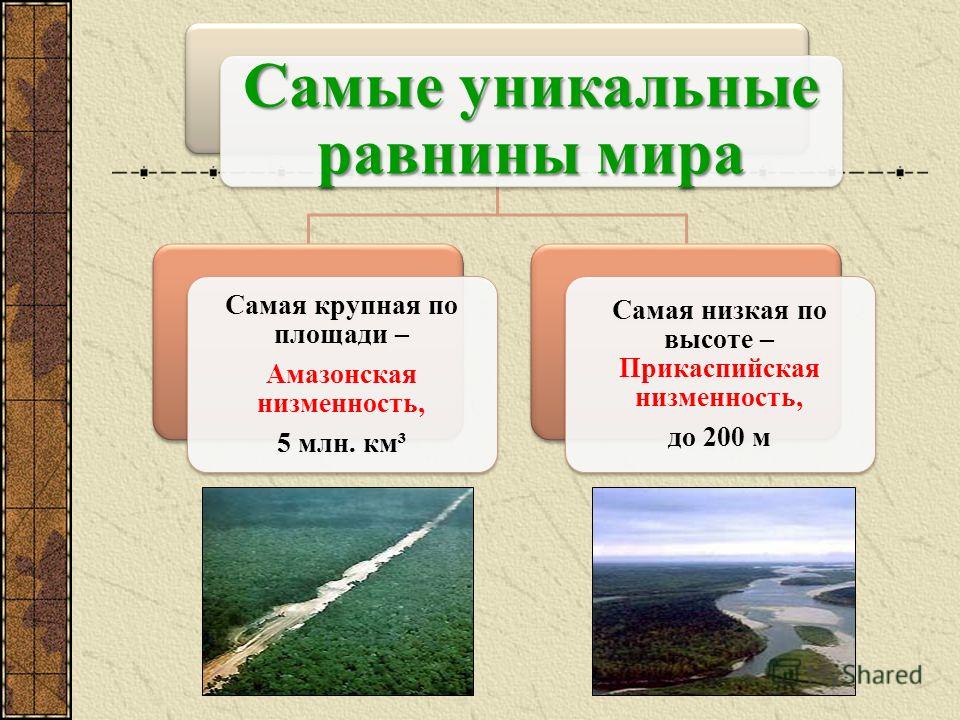
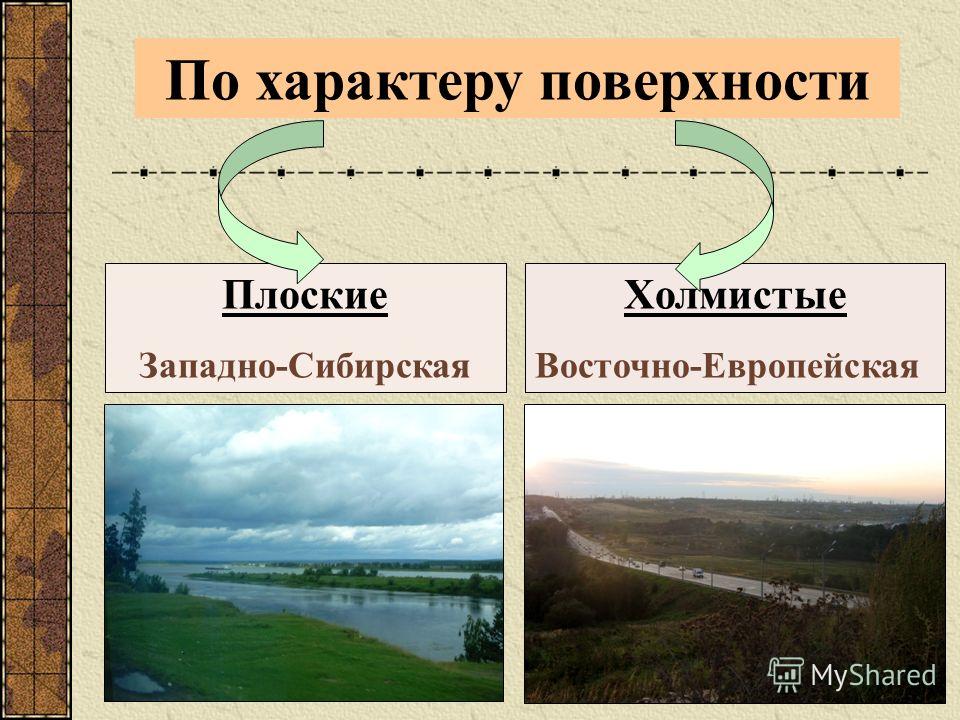
Influence of relief on human life Plains of the Mountain Most of the plains have long been mastered and densely populated, most of the world's population is concentrated on them. Here there are the most comfortable conditions for life and economic activity. Life in the mountains is more difficult than on the plains. Changes in people's lives are slower here, the traditional way of life is preserved longer. Living in the mountains makes people strong, courageous and very united.



Task 3: put the following landforms on the contour map Mountains: Himalayas, Pamirs, Tibet, Cordilleras, Appalachians, Andes, Alps, Caucasus, Scandinavian, Ural. Volcanoes: Kilimanjaro, Cameroon, Vesuvius, Etna, Klyuchevskaya Sopka, Fujiyama, Krakatau, Hekla, Cotopaxi, Orizaba. Plains: West Siberian, East European, Great Chinese, Central Siberian plateau, Amazonian lowland.

 1. The geographical position of the mountains (on which continent and in what part of it are they located, on the coast of which ocean). 2. The direction of the mountain range. 3. Approximate length of the mountain system. 4. Prevailing average heights. 5. Highest point (name, height and coordinates). Mountain description plan
1. The geographical position of the mountains (on which continent and in what part of it are they located, on the coast of which ocean). 2. The direction of the mountain range. 3. Approximate length of the mountain system. 4. Prevailing average heights. 5. Highest point (name, height and coordinates). Mountain description plan

Plan for describing the plains 1. Geographical position (on which mainland it is located, on which part of the mainland it is located). 2. Approximate length from north to south and from west to east. 3. Dominant heights. 4. The nature of the surface (flat or hilly). 5. General direction of slope.

